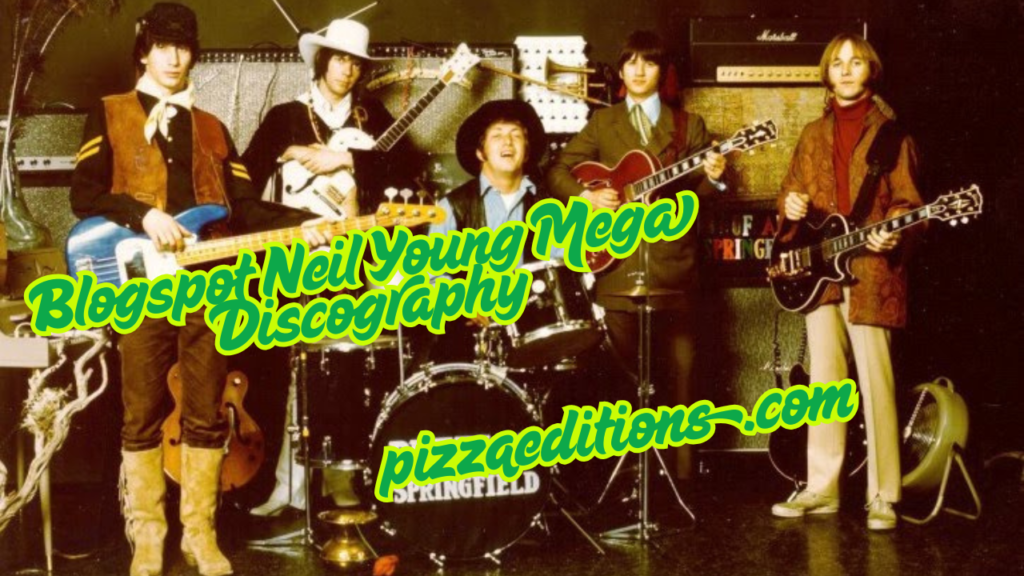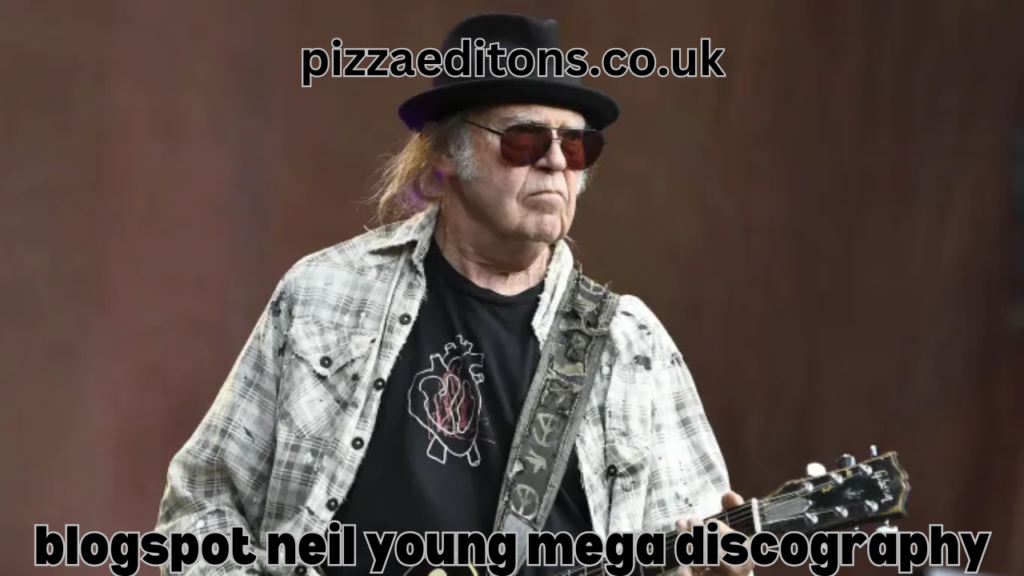One of rock’s most prolific and unyielding icons is Neil Young. With a career spanning more than 60 years, his body of work is more than simply a compilation of recordings; it is a vast, always changing story of artistic rebellion, social satire, love, heartache, and protest. Exploring the Blogspot Neil Young Mega Discography: A Comprehensive Guide to the Iconic Artist’s Work – Beyond The Standard,?? is like entering a sound realm full of timeless lyrics, complex textures, and emotional resonance for music historians, fans, and collectors.
In this extensive guide, we’ll break down the many phases of Young’s career—from the early Buffalo Springfield days to his vast solo catalog, his forays into grunge, folk, country, and experimental music, all the way to his archive projects and digital releases. This is beyond the standard discography: this is a mega discography—a detailed map of every era, mood, and revolution Neil Young has carved into musical history.
The Roots: Buffalo Springfield and The Birth of a Voice

Neil Young was a founding member of Buffalo Springfield, a band that had a brief but significant cultural impact in the late 1960s, before he rose to fame as a solo artist. Early indications of Young’s artistic potential were found in albums such as Buffalo Springfield Again. His experimental guitar style, melancholy melodies, and lyricism spoke to the intricacy that was ahead.
These early years laid the groundwork for Young’s thematic focuses: environmentalism, anti-war sentiment, love lost and found, and his fierce dedication to authenticity. Even within a band setting, his individuality shone through—paving the way for a solo journey unlike any other.
Solo Emergence: The Classic Run of the 1970s

The 1970s were arguably Neil Young’s golden decade. This period includes a string of timeless classics that are often hailed as among the finest albums in rock history:
- In 1969, he released his debut album with Crazy Horse, Everybody Knows This Is Nowhere. Expansive, dynamic, and raw.
- After the Gold Rush (1970): A blend of apocalyptic visions, folk music, and piano ballads.
- Harvest (1972): This album, which contained the breakthrough song “Heart of Gold,” launched Neil to global recognition, but he subsequently shrunk from the limelight.
- The so-called “Ditch Trilogy” began with the darker, more contemplative, and cathartic albums On the Beach (1974), Tonight’s the Night (1975), and Zuma (1975)..”
This era, foundational in the Blogspot Neil Young Mega Discography, showcases Young’s mastery of both acoustic storytelling and electric fury. He wasn’t just making music—he was making statements.
Genre-Hopping Maverick: The 1980s and Artistic Rebellion

The 1980s found Young experimenting wildly. Often misunderstood and critically panned at the time, albums from this era have gained appreciation for their boldness. Highlights include:
- Trans (1982): A synth-heavy, vocoder-infused album inspired by his son Ben’s struggle with cerebral palsy.
- Old Ways (1985): A dive into pure country.
- Landing on Water (1986): Slick, processed pop-rock.
- This Note’s For You (1988): A horn-driven blues-rock protest against corporate sponsorship in music.
This period represents a crucial part of the Blogspot Neil Young Mega Discography—a testament to his refusal to be boxed in. He pushed beyond the standard expectations of both fans and record labels, even risking his career to preserve his creative freedom.
The Godfather of Grunge: 1990s Renaissance
In the 1990s, Young experienced a critical resurgence. Dubbed the “Godfather of Grunge,” he found a new audience among bands like Pearl Jam, Nirvana, and Soundgarden. Albums like:
- Ragged Glory (1990): raucous, unruly, and blazing.
- Harvest Moon (1992): A soft, acoustic homage to Harvest with more mature, sage contemplations.
- The 1994 film Sleeps with Angels is a melancholic tribute to Kurt Cobain.
- The 1995 song Mirror Ball, which was recorded with Pearl Jam, dissolved the distinction between generations.
During this decade, Neil Young managed to stay relevant and radical. His ability to tap into the disillusionment and angst of the era without pandering is yet another reason his discography is worth dissecting in depth.
The 2000s to Present: Archives, Activism, and a Digital Vision
From the 2000s onward, Neil Young took control of his legacy like never before. His work began to blend past and present, reality and imagination. Major highlights:
- Greendale (2003): A rock opera tackling environmentalism and media manipulation.
- Living with War (2006): A blistering protest album against the Bush administration.
- Le Noise (2010): A raw solo electric record produced by Daniel Lanois.
- The Monsanto Years (2015): Targeting corporate agriculture with the band Promise of the Real.
At the same time, Young launched the Neil Young Archives, a digital platform housing high-resolution versions of his entire catalog, unreleased material, and concert films. These projects show how the Blogspot Neil Young Mega Discography is not just about the music, but about how that music is preserved, shared, and contextualized in a digital age.
Deep Cuts and Hidden Gems: Beyond the Essentials
For those ready to go even deeper, the Blogspot Neil Young Mega Discography includes an abundance of non-album singles, B-sides, live bootlegs, and unreleased recordings. Some of the best include:
- Time Fades Away (1973): A live album including completely original music that hasn’t been available on CD for a long time.
- Recorded in 1975 and released in 2020, Homegrown is a poignant, minimalist album that was previously put on hold in favor of Tonight’s the Night.
- Recorded in 1976 and released in 2017, Hitchhiker is a timeless solo acoustic masterpiece.
These albums reveal more intimate sides of Young’s personality, his indecisiveness about releases, and his persistent battle between vulnerability and rage.
Conclusion: Neil Young’s Discography Is a Living History
Neil Young’s career has never followed a straight line. His mega discography is sprawling, confounding, and gloriously inconsistent—but therein lies its power. Whether it’s through the crackling distortion of Crazy Horse, the acoustic whisper of a solo ballad, or the glitchy experiments of his 1980s output, Neil Young continues to defy expectations.
The Blogspot Neil Young Mega Discography: A Comprehensive Guide to the Iconic Artist’s Work – Beyond The Standard, ?? is not just for collectors or completists. It’s a roadmap through the soul of a musician who has always valued integrity over approval, expression over perfection.
To understand Neil Young’s discography is to understand a unique American artist—an artist who never stayed still, never bowed to pressure, and never stopped searching for truth in sound. If you truly want to experience music that challenges, heals, confronts, and transcends, this guide is your starting point. And it’s only just the beginning.
Also Read : Songoftruth. org: A Gateway to Music, Truth, and Community
